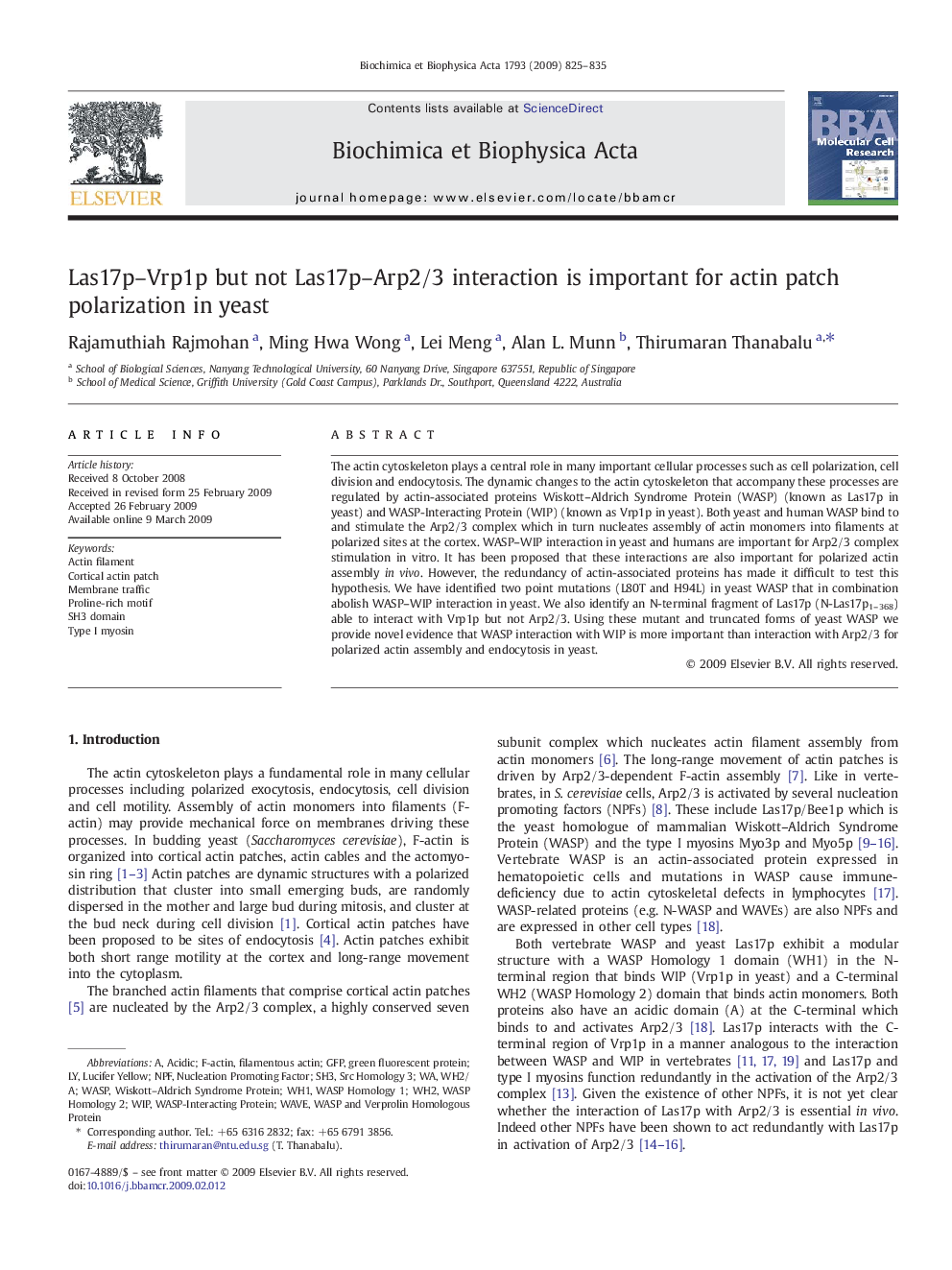| Article ID | Journal | Published Year | Pages | File Type |
|---|---|---|---|---|
| 1951214 | Biochimica et Biophysica Acta (BBA) - Molecular Cell Research | 2009 | 11 Pages |
The actin cytoskeleton plays a central role in many important cellular processes such as cell polarization, cell division and endocytosis. The dynamic changes to the actin cytoskeleton that accompany these processes are regulated by actin-associated proteins Wiskott–Aldrich Syndrome Protein (WASP) (known as Las17p in yeast) and WASP-Interacting Protein (WIP) (known as Vrp1p in yeast). Both yeast and human WASP bind to and stimulate the Arp2/3 complex which in turn nucleates assembly of actin monomers into filaments at polarized sites at the cortex. WASP–WIP interaction in yeast and humans are important for Arp2/3 complex stimulation in vitro. It has been proposed that these interactions are also important for polarized actin assembly in vivo. However, the redundancy of actin-associated proteins has made it difficult to test this hypothesis. We have identified two point mutations (L80T and H94L) in yeast WASP that in combination abolish WASP–WIP interaction in yeast. We also identify an N-terminal fragment of Las17p (N-Las17p1–368) able to interact with Vrp1p but not Arp2/3. Using these mutant and truncated forms of yeast WASP we provide novel evidence that WASP interaction with WIP is more important than interaction with Arp2/3 for polarized actin assembly and endocytosis in yeast.
